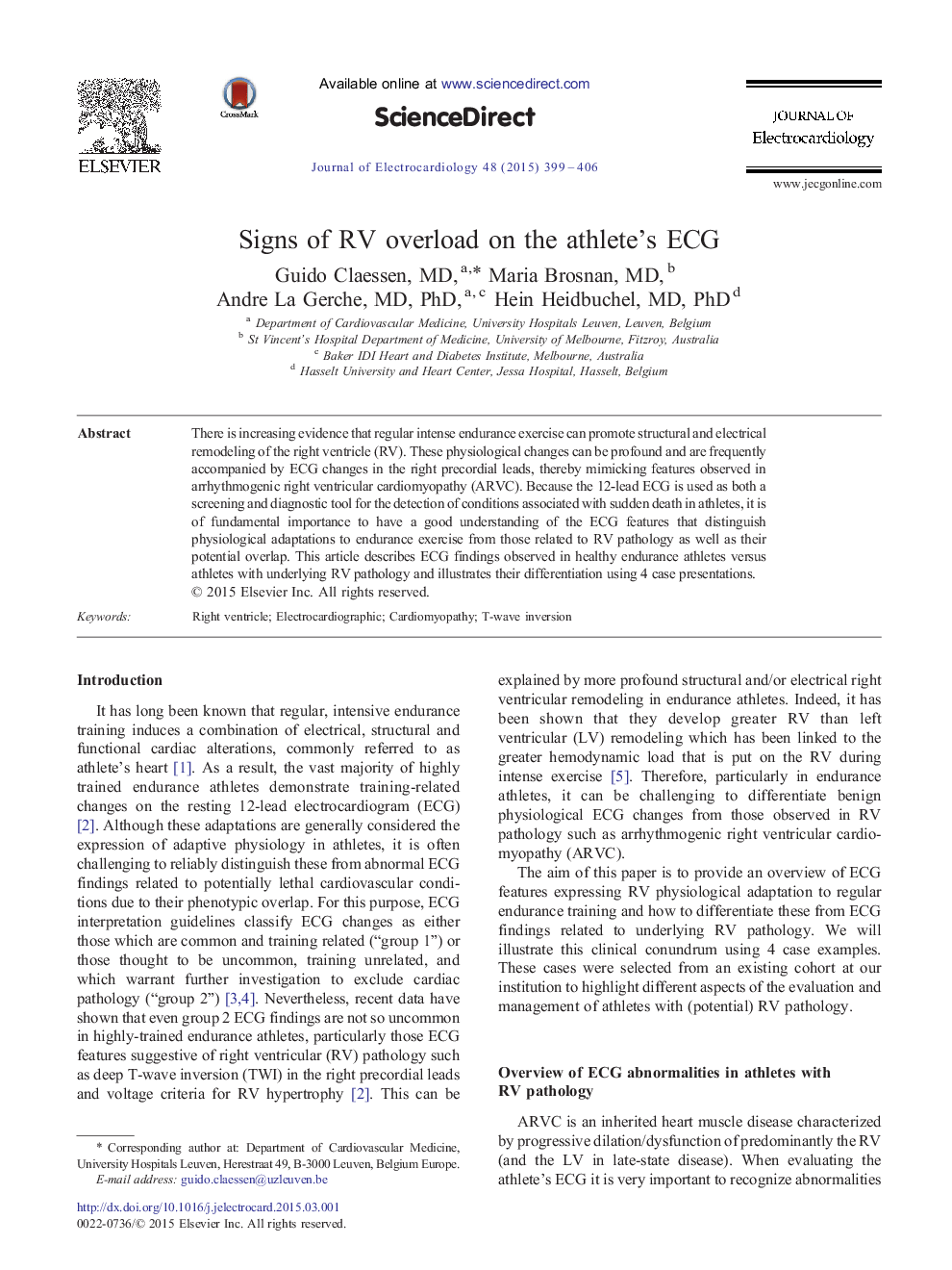| کد مقاله | کد نشریه | سال انتشار | مقاله انگلیسی | نسخه تمام متن |
|---|---|---|---|---|
| 2967591 | 1178852 | 2015 | 8 صفحه PDF | دانلود رایگان |

• Early recognition of electrocardiographic (ECG) findings related to arrhythmogenic right ventricular cardiomyopathy (ARVC) is important because sports continuation in an athlete with ARVC may trigger life threatening arrhythmias and cause progression of the arrhythmogenic substrate.
• In Caucasian athletes, T-wave inversion (TWI) in leads V1–V3 should trigger comprehensive evaluation for ARVC (genetically dependent and/or due to the increased load of exercise).
• In black athletes, convex ST-segment elevation with biphasic TWI in leads V1–V4 appears to be a benign finding. In contrast, symmetrical anterior TWI in V1–V3 preceded by isoelectric or downsloping ST segments is rare and should prompt further investigation to exclude ARVC.
• Suspicious symptoms in athletes with minor diagnostic ECG-findings of ARVC should prompt extensive evaluation including echocardiography, Holter monitoring, maximal exercise-ECG testing and possibly a cardiac MRI and electrophysiological study for early detection of ARVC.
• The combination of voltage criteria for right ventricular hypertrophy and right axis deviation is another ECG hallmark of abnormal RV afterload and further evaluation for diagnosis and work-up of pulmonary hypertension should be considered.
There is increasing evidence that regular intense endurance exercise can promote structural and electrical remodeling of the right ventricle (RV). These physiological changes can be profound and are frequently accompanied by ECG changes in the right precordial leads, thereby mimicking features observed in arrhythmogenic right ventricular cardiomyopathy (ARVC). Because the 12-lead ECG is used as both a screening and diagnostic tool for the detection of conditions associated with sudden death in athletes, it is of fundamental importance to have a good understanding of the ECG features that distinguish physiological adaptations to endurance exercise from those related to RV pathology as well as their potential overlap. This article describes ECG findings observed in healthy endurance athletes versus athletes with underlying RV pathology and illustrates their differentiation using 4 case presentations.
Journal: Journal of Electrocardiology - Volume 48, Issue 3, May–June 2015, Pages 399–406